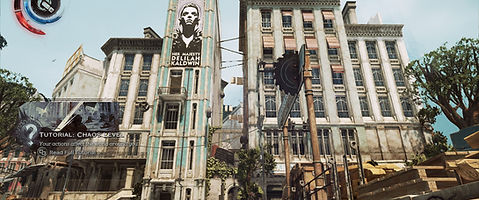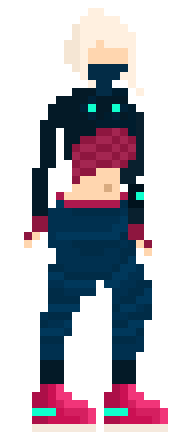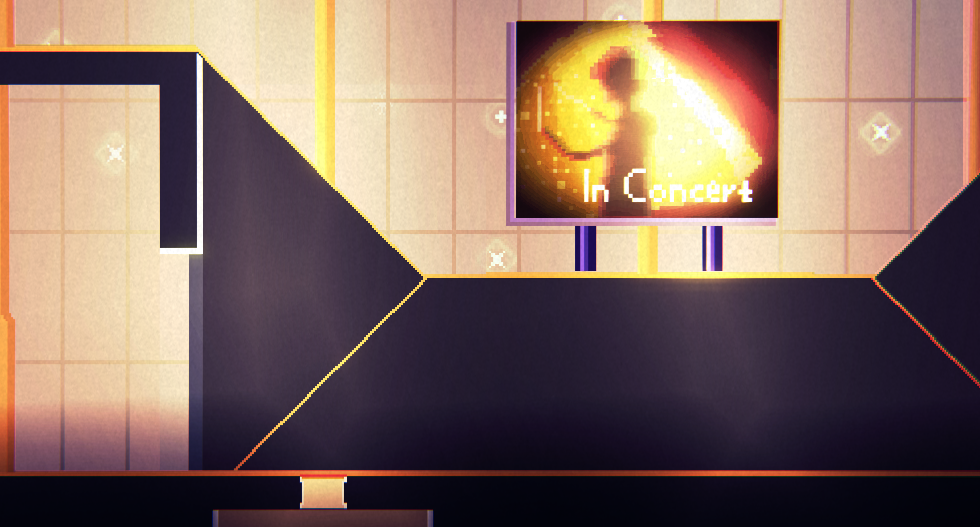Felix Faeh
Level Designer
Uprooted
NeuroHead


Genre: 2D Action-Adventure Stealth
Type: Single Player
Projected Platforms: Pc/Mac
Engine: Unity 2020.12f1
State: In development, Alpha 0.1 released
Dev Span: Fall 2020 - Present
Team Size: 2
Work Methods: Unity Collab
My Responsibilities: Game & Level Design, Art, Implementation, Feedback & UI, Marketing
Inspirations


Among the franchises that inspire us in the design and adhere to these intriguing mechanics interactions are the modern Deus Ex (Eidos-Montréal), Dishonored (Arkane Studios) and Hitman (IO Interactive) games. But we are also very keen on experimenting to push the boundaries, in terms of interactions on our own accord and seeing where that takes us.
In terms of art, sound and mood, we are going for a lethal dark and hazy vibe, the feel of a visceral slightly uncomfortable dystopian cyberpunk tone and an attempt at a modern render pipeline art approach to Pixel Art. TV Shows like Mr. Robot (Creator: Sam Esmail) inspire us for the plot, whereas artworks such as Shuttered (Artist: Aku 悪 ) and future architectures such as The Spiral (by Bjarke Ingels Group) in New York inspire us in terms of color palette and shapes of the levels respectively.



Design
In terms of NeuroHead's design we are looking to construct the mechanics, interactions and levels to be meaningfully holistic. They should allow the player to create their own gameplay and progression within the confines, in shapes and forms we developers could never anticipate. We provide goals, setting and obstacle, but ultimately it is on the player to combine the systems in play on their own in order to advance through each level.
When faced with a challenge in the level, there are a plethora of ways, the player can approach it. They may choose:
1. a direct approach through combat, but it could likely result in death, since hit by a bullet is near lethal.
2. to stealthily kill their targets and drag them away from patrols in order to sound the alarm.
3. non-lethally neutralize their targets with specific gadgets.
4. to sneak passed enemies, through vents and hidden space. Hiding in objects or climbing above or below enemies.
5. hack and combine the various objects in the level or even parts on the enemies (if that enemy is equipped with a computer) to cause distraction, locking them in rooms, disrupting them, etc. They player may also access stronger systems in levels, that give them access to even crazier tools, that might shift platforms, activate emergency states, sound in a coffee break (Bringing all the guards into a break room), turning turrets on and off and so on.
6. to go to a different access point altogether and try their luck there, since there will always be more ways to approach the level.
7. to outparkour their enemies all together, employing finesse and speed.
An important challenge in the design is to make sure, that these approaches are meaningful in their own way and do not just pose a pick your favorite color of the day alternative. In any given situation, the player should also be able to combine these options. Another challenge we are weary off is stray away as much as possible from a designer intention. There should be enough freedom, that the player can create their own path.


Prototype Level & 3C's
In our first test level that is used to test the 3Cs we wanted to focus on the blockout design and level tone, with its the grimy cool darks and the neon blues and reds. We created a level, that would have various access points, both with vertical and horizontal paths. The vent sections were important to the level design, because they would be the sneaky access points that allowed the player to traverse and skip rooms. But they are not without risk or danger to reach. In the first realized level that comes after the test level, we want there to be many meaningful approaches to the goal of the player, as well as a plethora of interactions and obstacles in their way that allow for a unique playthrough experience. Tall spaces are in place, to allow the player wall sliding and jumping.
Hover over image to unveil the spaces breakdown of the test level


Mechanics & Interactions
Willow can walk, run, crouch, sneak, slide, jump, wall jump, wall slide, hang onto ledges and drop from them. In addition she will be able to hide in certain objects, do melee attacks, fire guns, execute sneak attacks from behind and most importantly hack systems:
It happens by the push of a button and time will slow down drastically while a spatial non-diegetic interface pops up over the various hackable systems nearby. The player can leave this interface anytime by the same button.
When hacking, the player has to commit ram bars: A limited resource in order to hijack systems. They can hack as much as their amount of ram bars allows them, and those bars are only freed up again, once the player releases their control over a hijacked system. Every system has their own ram bar cost, so the player must chose what to take control over and what to leave untouched. This resource will increase as the player progresses, giving them the option to hack stronger systems or more systems over a period of time.
There will always be an upside and downside to each hack. Turrets can either be neutralized or they can be turned violent, each choice affecting both Willow and the enemies. Switch the turret off and it will save the player trouble. Switch it on and it will fire both at enemies and the player. If the player however were able to find cover from the turret amidst gun fire, hacking it will become an advantage. In our theory, this design makes each hack a meaningful decision, adding to the inquiring mind puzzle of the player. In any given situation, the solution is rarely the same.
Then there will be various play between objects. For example, there will be a flying drone in the game with a handle that can pick up a variety of objects, such as mini turrets, grenades, signal disruptors, or a pebble for distraction. Perhaps an even larger drone could transport a human. among other heavy objects. Picking up the player and dropping them on a higher platform sounds cool, but picking up an unbeknownst enemy and dropping them into the abyss, definitely a must for us.
Willow's Design
We designed Willow to have a more young and rebellious appearance, giving her baggy parkour runner pants and a freed belly button, but were inspired by Gantz (Anime by Hiroya Oku) suit design to give her a more mature and badass feel from the chest upwards. The hair is a short pale bob. A classic cyberpunk look. But the most important part of Willow are her flashy big shoes, that add a lot of her character and also gives the player pseudo diegetic stamina feedback indication (through glow, lines and sound), allowing us to stray away completely from a stamina UI bar.
The animations were kept rather simple, because in terms of pixel art animation, Willow will be switching in and out of a platitude of animations, causing for enough visual overload that we did not see the need to overdue each animation. We were adamant on a touch of realism involved in our character and game.

Our Plans
Being a passion side project, we aim one day to release NeuroHead as a fully playable and profitable experience, formed into story driven chapters that revolve around each level, with a larger encompassing story that involves uncovering the shadowy organization, that is pulling the strings behind the scene. There might however be a more heady plot beneath all of this.
As of right now, we have no concrete plans for a release date since development is in its early stages. We have however uploaded an early alpha on our Itch.Io website, which you can check out in the webiste link on top. We do have plans to add more platforms in the future, but found a site like Itch.Io ideal due to its ease of access and willingness for feedback from an awesome community that will greatly help further our development.
Development
NeuroHead is in its embryonic stage. Our first step was establishing the 3Cs of our female protagonist, hacker and parkour runner, Willow.
So far, we have established a level for testing the 3Cs, exploring a defined mood, developed the character art and movement kit, created 3 soundtracks to help visualize and potentially be implemented and started the process on character feedback, since it is an integral part to the game feel.
In terms of Character, Camera and Controls, we wanted the game to feel fluid and natural, as opposed to the heavily leaned tacky feel of many pixel art games.
We have opted to design with a great emphasis on player feedback as well. Having established early on who our target audience would be, it allows us to stay on the course of our design while improving on it.
We also created a camera that subtly and dynamically zooms in and out depending on the room size the player enters. For the sake of convenience, the camera will zoom out further in larger rooms, while for the sake of immersion zoom in much closer in smaller and tighter rooms.










